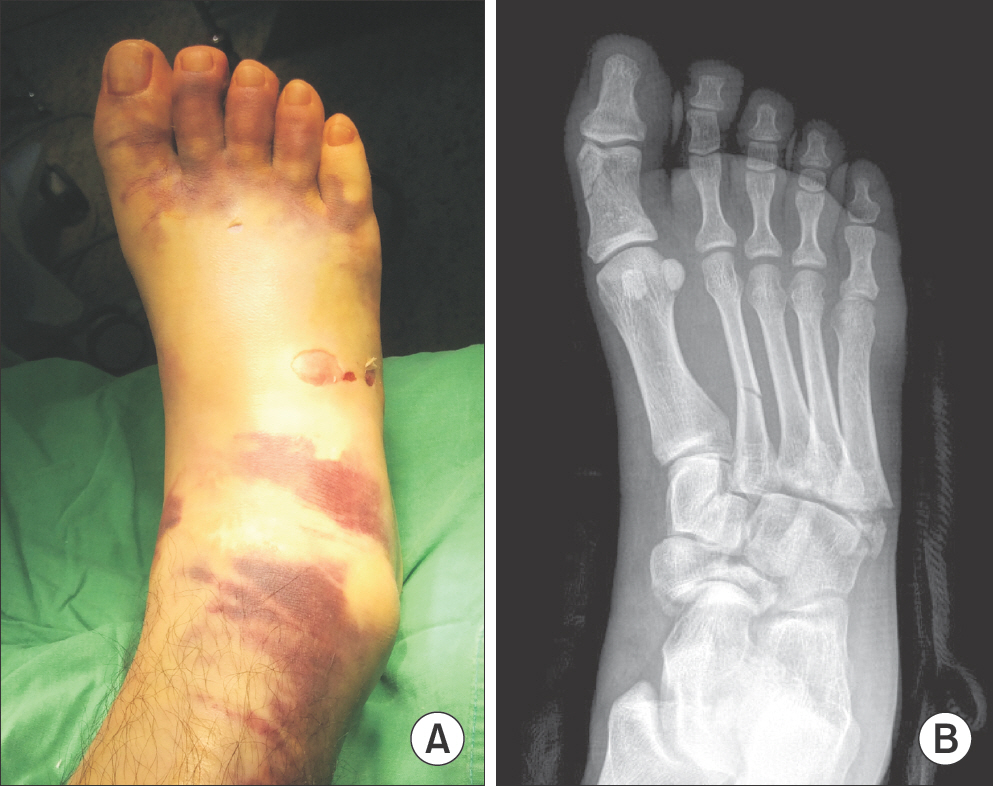J Korean Foot Ankle Soc.
2015 Mar;19(1):39-41. 10.14193/jkfas.2015.19.1.39.
Meshed Stab Incision for Severe Swelling after Foot and Ankle Injury: A Technical Report
- Affiliations
-
- 1Department of Orthopaedic Surgery, Kangdong Sacred Heart Hospital, Hallym University College of Medicine, Seoul, Korea. kiga9@hallym.or.kr
- KMID: 1958705
- DOI: http://doi.org/10.14193/jkfas.2015.19.1.39
Abstract
- Swelling is a body's natural reaction to foot and ankle injury to mount a healing inflammatory response. To some degree, swelling is necessary for healing and is something that cannot be avoided following injury. However, post-traumatic swelling may have an adverse effect on wound healing and surgery can often be delayed due to preoperative swelling. We report on a unique technique of making multiple meshed stab incisions around the site of injury to reduce soft tissue swelling and promote wound healing.
Keyword
MeSH Terms
Figure
Reference
-
1.Carati CJ., Anderson SN., Gannon BJ., Piller NB. Treatment of postmastectomy lymphedema with low-level laser therapy: a double blind, placebo-controlled trial. Cancer. 2003. 98:1114–22.2.Burkhardt A., Joachim L. Clinical options in edema control. J Hand Ther. 1993. 6:337–8.3.Faghri PD. The effects of neuromuscular stimulation-induced muscle contraction versus elevation on hand edema in CVA patients. J Hand Ther. 1997. 10:29–34.
Article4.Vasudevan SV., Melvin JL. Upper extremity edema control: rationale of the techniques. Am J Occup Ther. 1979. 33:520–3.5.Matsen FA 3rd., Krugmire RB Jr. The effect of externally applied pressure on post-fracture swelling. J Bone Joint Surg Am. 1974. 56:1586–91.
Article6.Sorenson MK. The edematous hand. Phys Ther. 1989. 69:1059–64.
Article7.Howard SB., Krishnagiri S. The use of manual edema mobilization for the reduction of persistent edema in the upper limb. J Hand Ther. 2001. 14:291–301.8.Casley-Smith JR., Gaffney RM. Excess plasma proteins as a cause of chronic inflammation and lymphodema: quantitative electron microscopy. J Pathol. 1981. 133:243–72.
- Full Text Links
- Actions
-
Cited
- CITED
-
- Close
- Share
- Similar articles
-
- Acute Anterior Talofibular Ligament Open Type Avulsion Fracture: A Case Report
- How Effective Is the Injection Therapy in Foot and Ankle Disorder?
- Soft Tissue Balancing on Total Ankle Replacement Surgery
- Ankle Arthrodesis in Very Unstable Charcot Arthropathy using Autogenous Fibular Strut Bone Graft (A Case Report)
- Severe Open Ankle Sprain (SOAS): A Case Report




